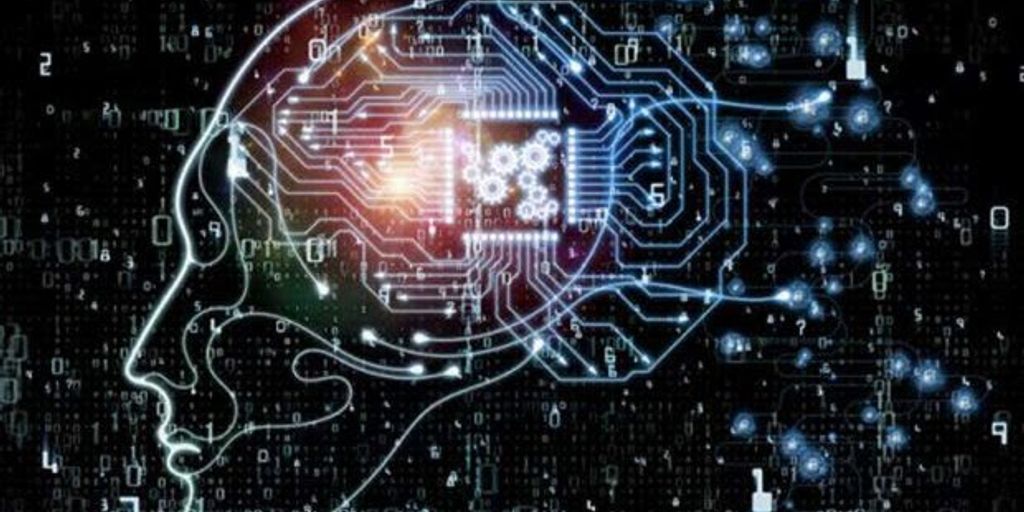The advent of AI in the creation of nude imagery, particularly through deep nude technology, has stirred significant controversy and debate. This technology, which uses advanced AI algorithms to generate realistic nude images from clothed photos, highlights critical issues surrounding ethics, legality, and societal impact. As we delve into the multifaceted implications of deep nude imagery, it becomes imperative to understand not only the technological processes involved but also the broader ethical and societal concerns.
Key Takeaways
- Deep nude technology uses sophisticated AI algorithms to create realistic nude images from clothed photos, raising significant ethical and privacy concerns.
- The technology has sparked widespread public outrage, leading to urgent calls for ethical guidelines and regulatory measures.
- Victims of non-consensual deep nude imagery suffer long-term consequences, highlighting the need for legal reforms and technological solutions.
- The emergence of deep nude technology has prompted a reevaluation of digital privacy laws and the ethical use of AI.
- Societal response to deep nude imagery necessitates a balanced approach, involving legal, technological, and educational initiatives to safeguard privacy and dignity.
Understanding Deep Nude Technology

Core Mechanisms of AI in Deep Nude Creation
Deep nude technology leverages sophisticated algorithms and neural networks, core components of deep learning and AI. These systems are trained on vast datasets of nude images to learn intricate patterns of human anatomy and various clothing styles. Once trained, the AI can analyze an input image and generate a new version where the clothing is removed, replaced with a realistic nude body based on the learned patterns.
The Evolution of Deep Nude Apps
The term “deep nude” entered the public lexicon more prominently around 2019 when an app designed to create such images gained notoriety. This app, also named “DeepNude,” used AI to automatically generate nude images of women from uploaded clothed photos. The app’s release sparked immediate public outrage and ethical debates, leading to its swift removal from distribution.
Technological Components and Their Functions
Deep nude technology is an application of deep learning and artificial intelligence (AI) that creates realistic images or videos by digitally altering the clothing and bodies of individuals in photographs, making them appear nude. This technology falls under the broader category of deepfakes, which are synthetic media where a person’s likeness is replaced with someone else’s likeness, often without their consent.
Ethical and Legal Challenges

Public Outrage and Ethical Debates
The proliferation of deep nude technology has sparked significant public outrage and ethical debates. These discussions often focus on the core values of consent, privacy, and respect for personal dignity. The ethical implications of creating and distributing AI-generated nude imagery without consent are profound, challenging societal norms and moral boundaries.
Legal Frameworks Governing AI Nude Women
Jurisdictions worldwide grapple with regulating the creation and distribution of AI-generated nude imagery. Laws vary significantly from one region to another, creating a complex legal landscape. Efforts to establish comprehensive protections against misuse remain ongoing, with a significant gap in universal legal standards.
Responsibilities of AI Developers
AI developers play a crucial role in upholding ethical standards and respecting user privacy. They are tasked with implementing technological countermeasures that detect, flag, and remove non-consensual content. Additionally, developers are encouraged to engage in creating norms and laws that protect individuals’ rights and dignity in the digital age.
Societal Impact of Deep Nude Imagery

Privacy and Consent Issues
The societal impact of deep nude technology is profound, touching on issues of privacy and mental health. Deep nude technology infringes on the privacy of individuals, exposing them to unwarranted public scrutiny and potential embarrassment. The distribution of such images can lead to psychological distress and damage to personal and professional relationships.
Long-term Consequences for Victims
While efforts are underway to mitigate the dissemination of non-consensual images, the persistent nature of digital content means that victims continue to suffer long-term consequences. Addressing this issue requires a coordinated approach involving legal reforms, technological solutions, and a societal commitment to respecting privacy and dignity.
Societal Response to Non-consensual Imagery
As society grapples with the implications of deep nude technology, it becomes clear that the issue transcends technological debate, touching upon the fundamental values of dignity, consent, and respect. This article explores the ethical quandaries and societal impacts of deep nude technology, delving into its legal status, the efforts to combat its spread, and the broader conversation about regulation and responsibility in the era of AI-driven media like Nudify.Online.
Technological Processes Behind AI Nude Women

Detection and Analysis of Subjects
The AI begins by identifying and analyzing the clothed person in the image, focusing on position, posture, and dimensions. This initial step is crucial as it sets the foundation for the accuracy of the subsequent nude generation.
Generative Adversarial Networks in Action
Using a generative adversarial network (GAN), the AI predicts what the person might look like without clothes. This process is based on extensive training with diverse datasets, which include various body types and clothing styles.
Refinement Techniques for Realism
The final step involves refining the image to enhance realism. Adjustments are made to lighting, texture, and shadows to ensure the final output is as convincing as possible. This refinement process is critical in creating a believable nude image that maintains the integrity of the original subject’s appearance.
Public Perception and Initial Reactions

Media and Public Outcry
The initial reception to deep nude technology was overwhelmingly negative, with public and critics alike condemning it for its potential to harm and degrade individuals, especially women. The ease with which it allowed for the creation and dissemination of non-consensual imagery raised urgent calls for regulatory measures and ethical guidelines. It also prompted a broader discussion about the responsibilities of AI developers and the platforms that might host such content.
Impact on Victims and Women
The public’s initial reception to such advancements was not just a matter of technological concern but deeply intertwined with human dignity and rights. The technology’s potential to create non-consensual imagery without the subject’s consent has been a critical point of contention, leading to significant distress among victims.
Calls for Regulatory Measures
According to new polling from Data for Progress, 85 percent of likely voters across the political spectrum said they support the proposed DEFIANCE Act — with 72 percent of women in strong support compared to 62 percent of men. But younger men are more likely to oppose the DEFIANCE Act, with about one in five men under 45 — 22 percent — saying they strongly or somewhat oppose legislation allowing subjects of explicit nonconsensual deepfakes to sue the creator.
The Role of AI in Modern Digital Ethics

Reevaluating Digital Privacy Laws
The rapid evolution of AI technologies, particularly those creating deep nude imagery, necessitates a bold reevaluation of digital privacy laws. Current regulations often lag behind, unable to address the unique challenges posed by AI. A comprehensive review and update of these laws are crucial to protect individual privacy and prevent misuse.
AI’s Impact on Societal Norms
AI’s integration into daily life is reshaping societal norms, especially concerning privacy and consent. The widespread use of AI in creating sensitive content like deep nude imagery highlights the need for societal awareness and proactive measures to ensure these technologies are used ethically.
Balancing Innovation and Ethical Use
While AI offers vast potential for innovation, balancing this with ethical use is paramount. Stakeholders must collaborate to create guidelines that ensure AI advancements do not compromise ethical standards or human dignity. This balance is essential for sustaining innovation while respecting individual rights and societal values.
The Dark Side of AI in Media
The Rise of AI-Generated Porn
The proliferation of AI-generated pornographic content has raised significant concerns about the ethical use of technology. AI’s ability to create realistic and non-consensual imagery has led to a surge in digital content that often bypasses the consent of the individuals depicted. This trend not only violates personal rights but also poses severe implications for privacy and mental health.
Challenges in Distinguishing Consensual from Non-consensual Content
Identifying whether content is consensual or not remains a major challenge in the realm of AI-generated media. The ambiguity surrounding the consent of digital avatars or AI-generated images complicates legal and ethical evaluations, making it difficult to enforce laws and protect individuals.
The Proliferation of Deepfake Technologies
Deepfake technology, which manipulates and fabricates visual and audio content, has become alarmingly sophisticated. The ease with which individuals can create and distribute fake content has led to a myriad of issues, including misinformation, harassment, and the potential to damage reputations irreparably. Efforts to combat these technologies are ongoing, but the rapid advancement outpaces current preventive measures.
Preventive Measures and Technological Solutions

Advancements in AI Detection Systems
The proactive development of more advanced detection algorithms is crucial in combating non-consensual deep nude imagery. AI detection tools analyze videos and images for signs of manipulation, such as inconsistencies in lighting, textures, or patterns. For example, Microsoft’s “Video Authenticator” tool assesses the probability that a piece of media is artificially generated.
Legal Reforms and Policy Changes
In response to the challenges posed by deep nude technology, international cooperation on legal standards and norms is essential. This includes creating safer digital environments and providing victims with pathways for legal recourse. Efforts to harmonize laws across jurisdictions are underway, aiming to streamline the process of combating these issues globally.
Community and Educational Initiatives
Educating the public about the implications of deepfake technology and promoting ethical digital behavior are key components in mitigating the societal impact of non-consensual content. Initiatives include:
- Public awareness campaigns
- Educational programs in schools
- Workshops for digital literacy
Note: Community engagement and education are pivotal in preventing the misuse of AI in creating non-consensual imagery.
Future Directions in AI and Privacy

Emerging Technologies and Their Implications
The rapid evolution of AI technologies, particularly in the realm of deepfake and privacy-invading tools, necessitates a forward-looking approach to both development and regulation. The potential for ethical applications in various fields is significant, yet the risk of misuse remains a pressing concern. It is crucial to balance innovation with stringent oversight to harness the benefits while mitigating risks.
Strengthening Legal Protections
As AI technologies become more pervasive, the legal frameworks governing their use must evolve. The introduction of comprehensive privacy laws and amendments to existing regulations will be essential to protect individuals from unauthorized use of their images and data. This legal evolution should be informed by global standards and adapt to the rapid changes in technology.
Promoting Ethical AI Development
The development of AI should be guided by ethical principles that prioritize transparency and accountability. A focus on ethical AI involves ensuring that all stakeholders, including developers and users, are educated about the potential impacts of AI technologies. Moreover, establishing clear guidelines and standards for ethical AI development can help prevent abuses and ensure that AI serves the greater good.
The Intersection of AI and Human Dignity

Upholding Values in the Digital Age
In the rapidly evolving landscape of artificial intelligence, upholding human dignity remains a cornerstone. The integration of AI into daily life demands a steadfast adherence to ethical principles that respect and enhance human values.
The Role of Consent in AI Technologies
Consent is pivotal in the deployment of AI technologies. Ensuring that individuals have control over their data and are informed about how their information is used is crucial for maintaining trust and integrity in AI systems.
Safeguarding Individual Rights
The protection of individual rights in the digital age is paramount. AI must be developed and used in ways that protect privacy, ensure security, and uphold the fundamental rights of individuals. This includes preventing the misuse of AI in creating non-consensual explicit images, which raises significant ethical concerns.
Note: It is essential to continuously monitor and regulate AI technologies to prevent potential abuses and ensure they contribute positively to society.
Innovative Uses of AI in Art and Education

Potential Benefits of Generative AI
Generative AI has revolutionized the art scene by enabling artists to explore new creative dimensions and styles. This technology allows for the creation of complex and captivating artworks that might not be possible through traditional methods. AI-generated imagery offers both opportunities and challenges to the field of visual art education, as it pushes the boundaries of creativity and innovation.
Ethical Considerations in Creative Fields
The integration of AI in creative fields raises significant ethical considerations. It is crucial to ensure that AI tools are used responsibly and do not infringe on the originality and rights of human artists. The debate around AI-generated art involves discussions on authorship, creativity, and the potential for AI to democratize art creation, making it accessible to a wider audience without advanced skills.
Educational Applications and Ethical Training
AI also plays a transformative role in education, particularly in providing interactive and personalized learning experiences. The use of AI in educational settings can enhance understanding and engagement, especially in complex subjects like art and ethics. Moreover, educational initiatives focused on ethical training are essential to prepare students and professionals to navigate the challenges posed by AI technologies in creative fields.
Global Perspectives on AI Nude Women

Cultural Variations in Perception
Different cultures have varied thresholds of acceptance and interpretation of AI-generated nude imagery. This diversity influences both the development and reception of such technologies globally. For instance, in some regions, there might be a higher tolerance for digital representations of nudity in art and media, while in others, such depictions could provoke significant public and legal backlash.
International Legal Standards
Countries around the world are at different stages of developing and enforcing laws related to AI and digital content. International legal standards are still evolving, with some nations having strict regulations against the creation and distribution of non-consensual nude images, while others may lack specific laws addressing these issues.
Global Efforts to Combat Misuse
Efforts to address the misuse of AI in creating non-consensual nude imagery are gaining momentum globally. Initiatives include international collaborations to harmonize laws, share best practices, and develop technology to detect and prevent the spread of such content. These efforts underscore the necessity of a unified approach to tackle this pressing issue.
Conclusion
The emergence of deep nude technology, a subset of deepfake technology, has spotlighted the dual-edged nature of AI advancements. While offering significant potential for innovation in fields such as art, entertainment, and education, these technologies also present serious ethical and societal challenges, chiefly the creation and distribution of non-consensual nude images. The implications of such misuse have prompted a critical examination of legal, ethical, and technological frameworks. Addressing these issues requires a coordinated approach involving legal reforms, technological solutions, and a societal commitment to respecting privacy and dignity in the digital realm.
Frequently Asked Questions
What is deep nude technology?
Deep nude technology is a form of artificial intelligence that uses deep learning to create realistic images or videos by digitally altering the clothing and bodies of individuals in photographs, making them appear nude. It’s part of the broader category of deepfakes.
When did deep nude technology become widely recognized?
The term ‘deep nude’ gained significant public attention around 2019 with the release of an app named ‘DeepNude’ that created nude images from uploaded clothed photos, sparking widespread ethical debates and public outrage.
How does deep nude technology work?
Deep nude technology leverages sophisticated algorithms and neural networks to train on vast datasets of nude images. It analyzes input images of clothed individuals, generates a nude version by removing the clothing, and refines the image to enhance realism.
What are the ethical concerns associated with deep nude technology?
The primary ethical concerns include the non-consensual creation and distribution of nude images, privacy violations, and the potential to harm and degrade individuals, particularly women. These issues raise significant debates about consent and digital ethics.
What are the societal impacts of deep nude imagery?
Deep nude technology raises urgent questions about privacy, consent, and ethical use of AI, leading to long-term consequences for victims. It necessitates a coordinated approach involving legal reforms, technological solutions, and societal commitment to privacy and dignity.
How was the initial public reaction to deep nude technology?
The initial reception was overwhelmingly negative, with public and critics condemning the technology for its potential to harm and degrade. It sparked urgent calls for regulatory measures and ethical guidelines.
What legal frameworks govern deep nude technology?
Deep nude technology is governed by existing digital ethics and privacy laws, which are being reevaluated in light of its implications. There’s a growing need for stronger legal protections and ethical guidelines to address the challenges posed by such technologies.
What future directions exist for combating the misuse of deep nude technology?
Future directions include strengthening legal protections, promoting ethical AI development, and implementing advanced AI detection systems to prevent the dissemination of non-consensual images. These efforts aim to balance innovation with ethical use of technology.









